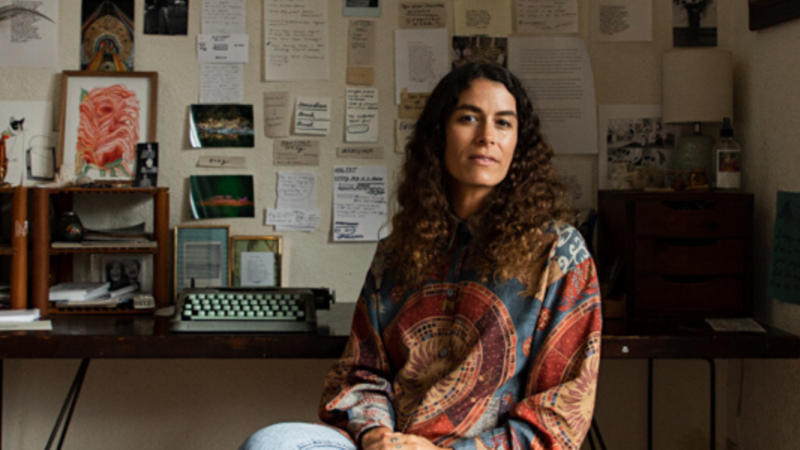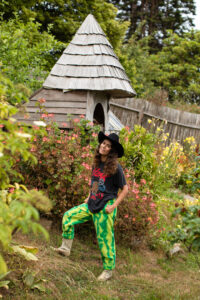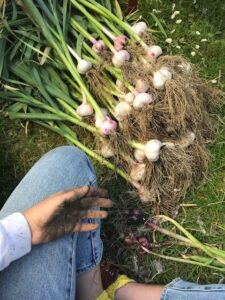-
E90: How to Stop Minding and Start Living
Michael Singer — June 29, 2025
“Do you mind?” We “mind” everything, from traffic to childhood memories, and this habitual...
-
Caroline Myss: From the Love of Power to the Power of Love
Caroline Myss — June 24, 2025
Few luminaries in modern times have opened the doors to the spiritual dimensions of who we are, why...
-
Honey Tasting Meditation: Build Your Relationship with Sweetness
There is a saying that goes “hurt people hurt people.” I believe this to be true. We have been...
Written by:
Amy Burtaine, Michelle Cassandra Johnson
-
Many Voices, One Journey
The Sounds True Blog
Insights, reflections, and practices from Sounds True teachers, authors, staff, and more. Have a look—to find some inspiration and wisdom for uplifting your day.
Standing Together, and Stepping Up
Written By:
Tami Simon -
The Michael Singer Podcast
Your Highest Intention: Self-Realization
Michael Singer discusses intention—"perhaps the deepest thing we can talk about"—and the path to self-realization.
This Week:
E89: Freedom from Preference: The Evolution of Caring -
Many Voices, One Journey
The Sounds True Blog
Insights, reflections, and practices from Sounds True teachers, authors, staff, and more. Have a look—to find some inspiration and wisdom for uplifting your day.
Take Your Inner Child on Playdates
Written By:
Megan Sherer
600 Podcasts and Counting...
Subscribe to Insights at the Edge to hear all of Tami's interviews (transcripts available, too!), featuring Eckhart Tolle, Caroline Myss, Tara Brach, Jack Kornfield, Adyashanti, and many more.
Most Recent
Open-Eye Meditation (And Why You Should Be Doing It)

It can be helpful to begin with some retraining of the relationship between our eyes, our small mind, and our small self. We can begin to return our eyes to their natural condition and have the information move to awake awareness.
According to the American Foundation for the Blind, “vision is the product of a complex system of which the eyes are only one part. The processing of visual information—the receipt of visual stimuli through the eyes, its interpretation by various brain centers, and its translation into visual images—has been estimated to involve as much as 40 percent of the brain.”
When our eyes are darting around or scanning for a specific threat, we are on alert. Sometimes our attempts to focus ourselves by narrowing our eyes and concentrating can keep our brain in a fixed, task-positive mode. Our goal in practicing effortless mindfulness is to be able to shift to another operating system, the end point of which is open-hearted awareness, in which all our senses and systems—including vision—are functioning in their natural state: open, relaxed, clear, and integrated. To do this, we need to learn how to shift our awareness and live with our eyes open.
Here are some helpful hints for sustaining an open gaze while shifting awareness. You don’t necessarily need to experience all of them as I describe them. Use any of the following hints that work for you:
- Relax your eyes and soften your gaze so that your eyesight is not dominant and all your senses are experienced equally.
- Instead of looking through a narrow tunnel of vision or in a pinpointed way at one object, see the forest as well as one tree. Put your pointer fingers together up above your head in front of you and then part them to either side, drawing a big circle in front of your body. Let your gaze open to include the entire circular area all at once so that you are seeing in a more open way.
- Rather than looking at one object, create a diffused view like a soft lens of a camera by looking to the wider scene of what’s in front of you.
- Extend one hand in front of you with your palm facing you at the distance you would be looking at a friend’s face. Look at your hand and the space around it. Now drop your hand and look at the open space. If your eyes habitually focus on the first object you see, repeat the previous steps until you get a feel for resting your eyes on objectless space.
- Notice that your eyes do not operate like your hands. You do not go out to see something as your hands go out to pick something up. Your eyes work in a similar way as your ears. Just as your ears are receiving sound, light is reflecting off objects and coming into your eyes. What does it feel like when seeing is receiving?
- Rest back as the light comes to your eyes and then goes to open-hearted awareness while all your senses are open. Feel like you are equally aware of all your senses rather than focusing on seeing or thinking as primary.
- Feel like you are receiving light as you soften your eyes while having a wide-open view of the periphery.
This is an excerpt from The Way of Effortless Mindfulness: A Revolutionary Guide for Living an Awakened Life by Loch Kelly.

 Loch Kelly, MDiv, LCSW, is a leader in the field of meditation and psychotherapy. He is author of the award-winning Shift into Freedom and founder of the Open-Hearted Awareness Institute. Loch is an emerging voice in modernizing meditation, social engagement, and collaborating with neuroscientists. For more, visit lochkelly.org.
Loch Kelly, MDiv, LCSW, is a leader in the field of meditation and psychotherapy. He is author of the award-winning Shift into Freedom and founder of the Open-Hearted Awareness Institute. Loch is an emerging voice in modernizing meditation, social engagement, and collaborating with neuroscientists. For more, visit lochkelly.org.
Buy your copy of The Way of Effortless Mindfulness at your favorite bookseller!
Sounds True | Amazon | Barnes & Noble | Indiebound
Jerry Colonna: Open Heart, Strong Back
Jerry Colonna is an investor, an entrepreneur, and the CEO of reboot.io, a coaching firm for executive-level businesspeople. He is the author of Reboot: Leadership and the Art of Growing Up. In this episode of Insights at the Edge, Tami Simon speaks with Jerry about bringing our authentic selves and open hearts to the business world. Jerry describes the path that brought him from a troubled childhood to becoming a successful businessman, as well as the events that made him reconsider how he wanted to better the world. Tami and Jerry discuss how self-inquiry can help make you a better leader and why everyone needs to define “success” for themselves. Finally, they talk about bringing your full, vulnerable aliveness to the workplace and what it truly means to “grow up.” (74 minutes)
Effortless Mindfulness for Pain Relief
 What Is Pain?
What Is Pain?
Pain is a normal part of human life. And pain hurts. Although pain feels like a threat, pain is not attacking us. Pain is designed to help us survive. Pain and pleasure are signals. Pain is a signal that something is out of balance in your emotional, mental, spiritual, or physical life and that something needs attention. It is meant to be unpleasant, for a good reason: to bring our attention to a potentially dangerous situation until the issue is treated. The sharp, unpleasant signal is designed that way to make sure we drop everything else and attend to the situation immediately. When pain continues unabated after our best healthy efforts to tend to it in a physical way, we look for ways of stopping it, reducing it, or escaping it in any way we can.
For example, if you’re walking barefoot, thoroughly engaged in a conversation with a friend, and you step on a piece of wood and get a splinter, the strong unpleasant pain signal is meant to get you to immediately stop all other interests and attend to the wound. If you had a sharp piece of wood in your foot and it didn’t cause pain, you might not bother to take it out, resulting in infection or worse. Once you take care of the immediate problem, or source, the nature of pain is to eventually go away. Pain by itself is not an entity or an enemy that has any motivation of hurting you. It is an important survival mechanism of our body—a communication tool.
By way of our senses, we have contact with experience in and outside of our body that tends to feel either pleasant, unpleasant, or neutral. We tend to like pleasant sensations, which leads to craving what we like and trying to get more pleasure, and we tend to dislike unpleasant sensations, which leads to rejecting what we don’t like. When that strong craving or rejection happens, there is a contraction of our greater sense of self into a specific identity of “craver” or “rejecter”: we configure our consciousness into a “me” that is a “thinker” or “manager” that has a strategy to get its goals and desires met, and believes that that strategy is real and right. Craving and rejection are a normal part of our physical survival, like craving food when we’re hungry, but they also become our primary source of suffering when they become our identity.
Rather than reacting to the pain, we must treat the underlying condition that is causing pain in order for it to subside. It is important to first check out the cause of the pain in every way possible so as not to ignore, overlook, or deny a potentially dangerous condition. In some types of chronic pain that we know the cause of, like arthritis or sciatica, the nerve signal system is alerting us of an issue, but there’s no splinter to be removed from our back or foot. If we’ve attended to all the medical and alternative diagnoses and treatments, and the pain still persists, we still have the opportunity to learn some approaches using our own consciousness to relate to pain differently. Effortless mindfulness is a wonderful approach that does not in any way attempt to replace or deny diagnosing the cause of pain and working to cure it through any and all means. I am simply sharing this practice as a suggestion of what can be done in conjunction with any medical treatment.
With effortless mindfulness, we can learn to become present with the unpleasant—an important skill that we often avoid learning until we experience inescapable pain. We may already have experienced, through effortless mindfulness, how chattering thoughts recede into background awareness or can be met by open-hearted awareness. The great news is that we can do this with pain signals as well! They can become like thoughts and go into the background of awake awareness. When the pain signals recede to the background or significantly lessen, we no longer have to suffer silently or try to escape the pain through behaviors of shutting down, numbing, addiction, or acting out. By changing how we relate to pain, we can find a doorway to a freedom that allows us to respond to pain from courage and intimacy. We can learn to be present with the unpleasant, remain sensitive without being defensive, and be responsive but not reactive. When the intelligence of awake awareness knows directly that there is no immediate danger, the pain signal can go into the background.
In this video below, join me as I guide you through this practice of using effortless mindfulness to help you be present and work with your pain for lasting relief.
This is an excerpt from The Way of Effortless Mindfulness: A Revolutionary Guide for Living an Awakened Life by Loch Kelly.

 Loch Kelly, MDiv, LCSW, is a leader in the field of meditation and psychotherapy. He is author of the award-winning Shift into Freedom and founder of the Open-Hearted Awareness Institute. Loch is an emerging voice in modernizing meditation, social engagement, and collaborating with neuroscientists. For more, visit lochkelly.org.
Loch Kelly, MDiv, LCSW, is a leader in the field of meditation and psychotherapy. He is author of the award-winning Shift into Freedom and founder of the Open-Hearted Awareness Institute. Loch is an emerging voice in modernizing meditation, social engagement, and collaborating with neuroscientists. For more, visit lochkelly.org.
Buy your copy of The Way of Effortless Mindfulness at your favorite bookseller!
Sounds True | Amazon | Barnes & Noble | Indiebound

Customer Favorites
Meet the Author of . . . Every Day Is a Poem
The Author
Jacqueline Suskin has composed over forty thousand poems with her ongoing improvisational writing project, Poem Store. She is the author of six books, including Help in the Dark Season. Her work has been featured in the New York Times, the Atlantic, and Yes! magazine. She lives in Northern California. For more, see jacquelinesuskin.com.
The Book
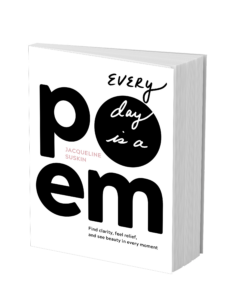
How do we deal with the heaviness of everyday living? When we are surrounded by uncertainty, distrust, and destruction, how do we sift through the chaos and enjoy being alive?
In Every Day Is a Poem, Jacqueline Suskin aims to answer these questions by using poetry as a tool for finding clarity and feeling relief. With provocative questions, writing practices, and mindset exercises, this celebrated poet shows you how to focus your senses, cultivate curiosity, and create your own document of the world’s beauty. Emphasizing that the personal is inextricable from the creative, Suskin offers specific instructions on how to make a map of your past and engage with your pain to write a healing poem.
Show us a day in your life.
I’m currently the Artist in Residence at Folklife Farm, where I spend my days writing, reading, teaching online and working in the garden.
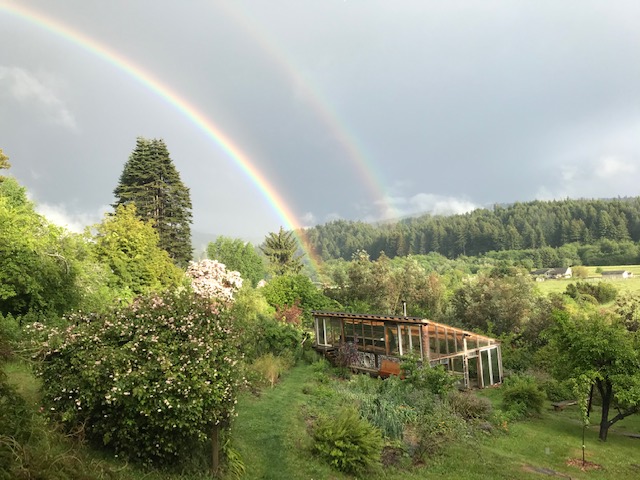
I wake up and take care of my body, dance, stretch, and harvest something for breakfast.
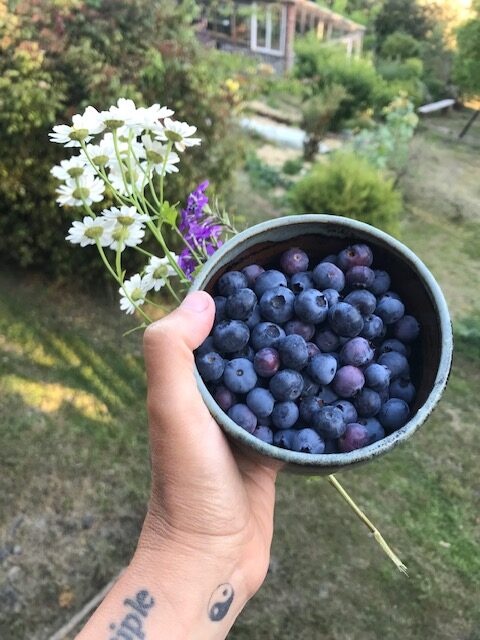
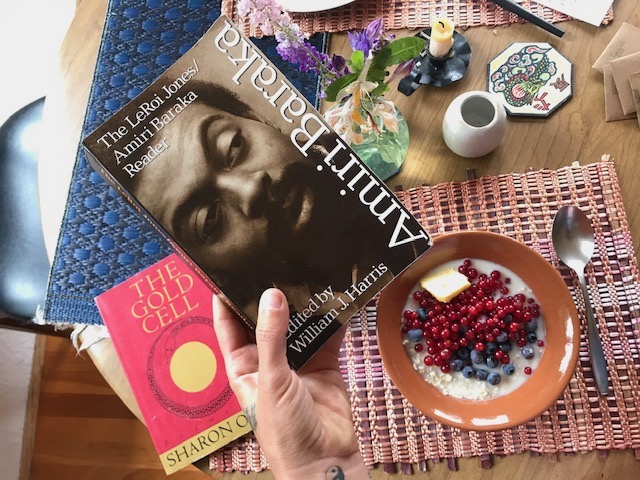
Then I usually work at my desk until late afternoon when I find my way back to the garden for more harvesting and chores.
When I’m working on a book, I’ll wake up around 4 am to write before anyone else is awake. I know that whenever I wake up in the dark with an idea, it’s my job as a poet to turn the light on and write it down.
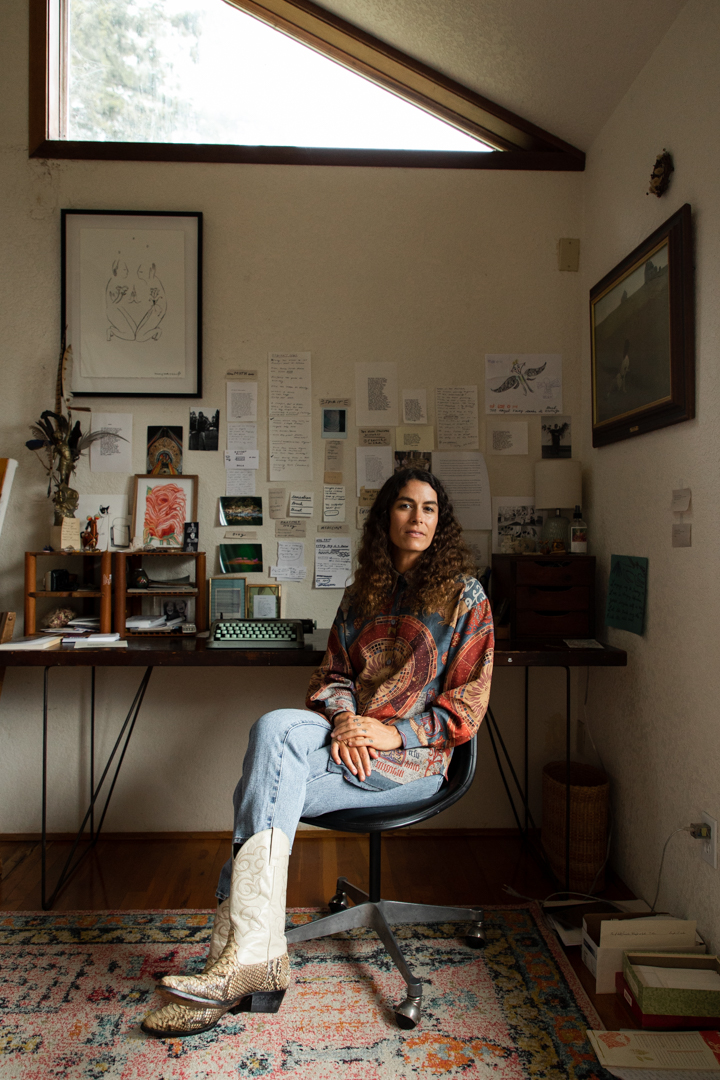
With this schedule, my days are fluid; and although I make showing up at my desk a main priority, I never forget that it’s summer and there are rivers to swim in, flowers to smell, and berries to pick.
Are you learning any new tricks or skills during this time (COVID)? What’s been hardest for you? What do you miss the most? Has your book taken on a new meaning in the world’s current circumstances? Is there anything you would have included in your book if you were writing it now?
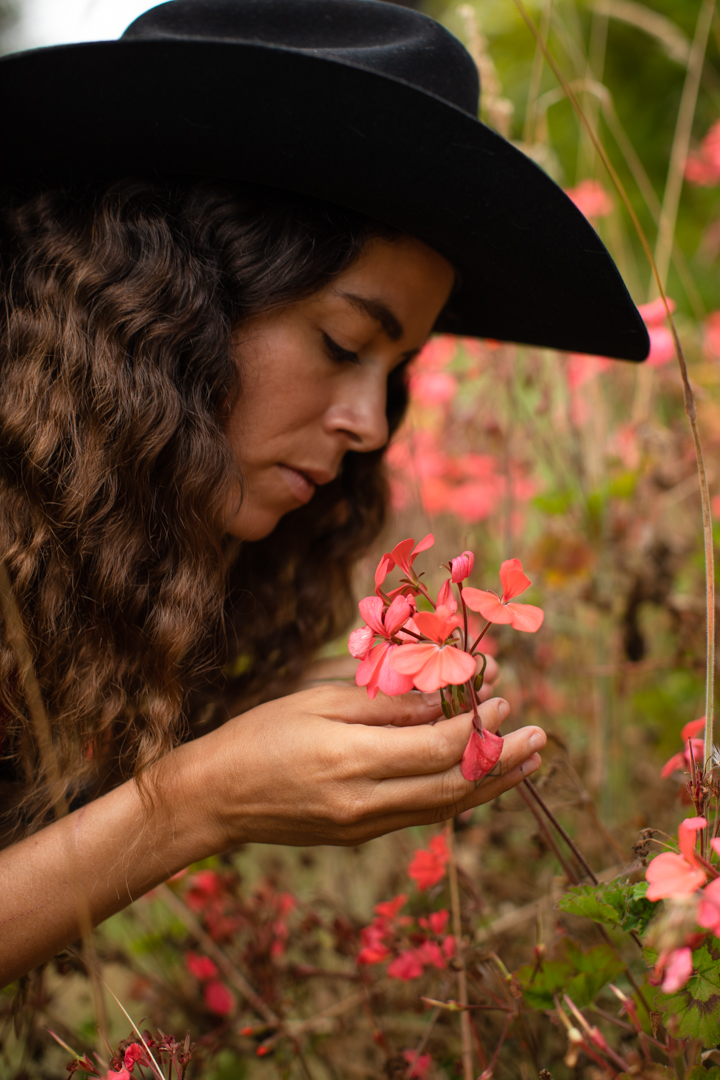
During quarantine, I had to shut down the retreat program I was running at Folk Llife Farm. This was a sad shift, as we had folks signed up to stay for months in advance. Now that I’m not spending my time hosting or interacting with my local community in person, I’m engaging with my online community in a larger capacity. I miss sitting in front of my audience, writing for people after looking them in the eye, and I really miss browsing bookstores. I miss hugging my friends, having teatime and long conversations, and I miss going on tour. But I can’t complain. Poetry has its place in the world now more than ever. I’m here to translate the communal mood, to voice our collective pain, and find the beauty in all of it. My book will help others do this as well. And if there’s one thing COVID has taught me, it’s that we all need an outlet for our emotions, especially when we feel unseen and disconnected. Poetry is this outlet and we can still share it even if we can’t be with one another in person.
What is something about you that doesn’t make it into your author bio?

I’m an ecstatic earth worshiper. Everything I do, every word I write, is attached to the idea that when my readers discover healing through my words, when they transform and become better by way of my work, they’ll in turn treat themselves, each other, and the earth better. This planet is a perfect gift and humans have ruined so much of it. Through my efforts as a poet, I hope to pay tribute to the earth and offer up ways for humans to change their relationship to our one and only home.
Photos of Jacqueline Suskin by James Adam Taylor
Photos around Folklife Farm by Jacqueline Suskin
Learn More

Sounds True | Amazon | Barnes & Noble | Indiebound | Bookshop
Jewish Meditation
Tami Simon speaks with Rabbi David Cooper, one of today’s leading teachers of Jewish meditation. Rabbi Cooper is author of many books, including God Is a Verb and The Heart of Stillness. His programs with Sounds True include Invoking Angels, The Beginner’s Guide to Kabbalah, and two six-CD audio learning courses, Mystical Kabbalah and Seeing Through the Eyes of God. In this episode, Tami speaks with David about the ability of the Sabbath to restore our soul, the power of using Hebrew mantras in our meditation, what angels are and how we can relate to them, and a guided meditation for calling on help and support at any time in our lives. (67 minutes)
Clemens G. Arvay: We are Eco-Psychosomatic Beings
Clemens Arvay is a biologist and nonfiction author who specializes in landscape ecology, applied plant science, and the emerging field of eco-psychosomatic studies. With Sounds True, he has released The Biophilia Effect: A Scientific and Spiritual Exploration of the Healing Bond Between Humans and Nature. In this episode of Insights at the Edge, Tami Simon speaks with Clemens about the term “biophilia” and what it implies for human health and wellness in relationship to nature. Clemens explains the role of terpenes—complex biochemicals emitted by plants—and how they interact with the human body. Branching from this concept, Tami and Clemens discuss the idea that humans are much more tightly connected to the rest of nature than we realize, as well as what this might mean for the future of medicine. Finally, Clemens describes the practice of forest bathing and how we can maximize the physical, mental, and spiritual benefits of spending time in nature. (69 minutes)

